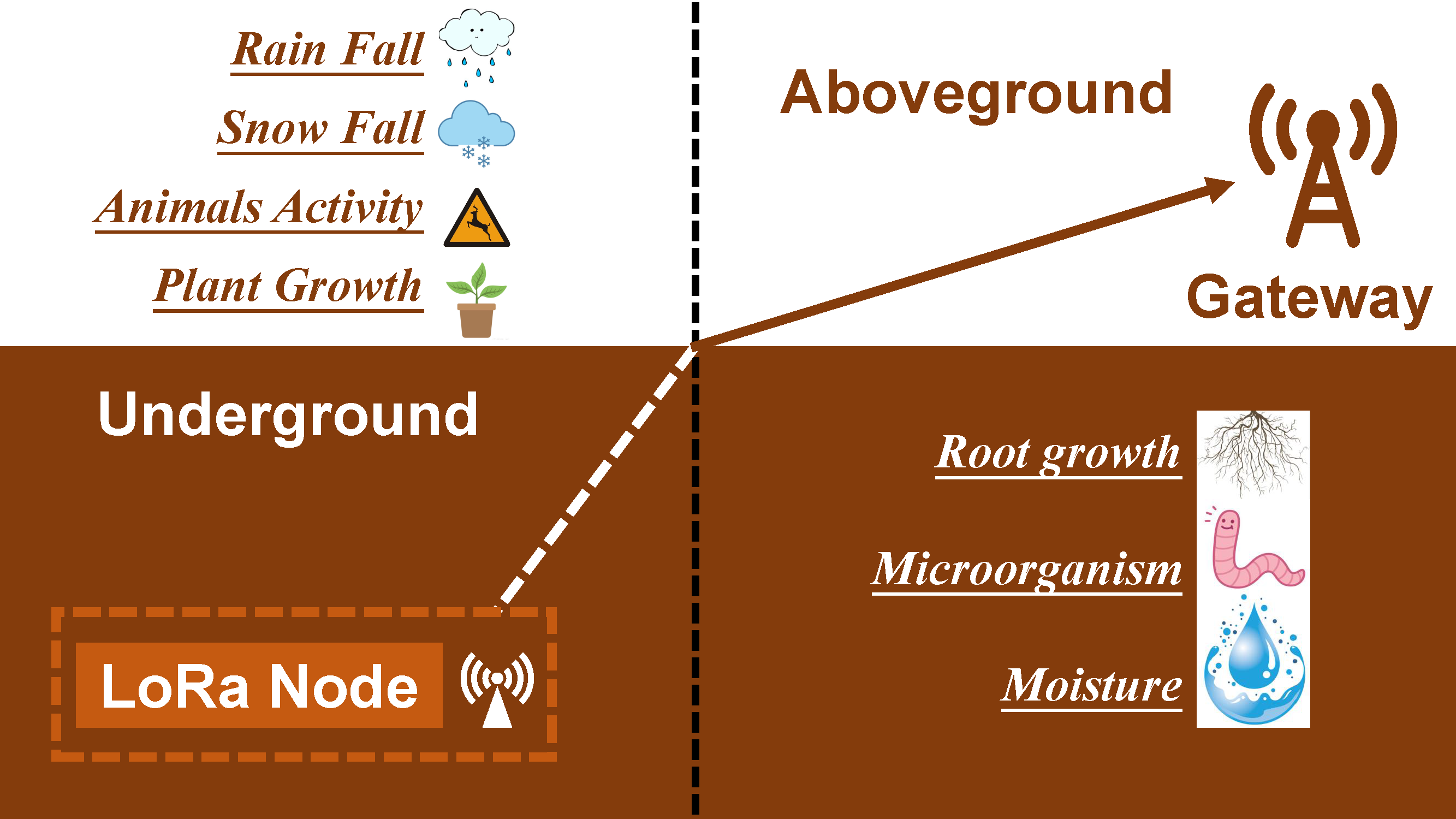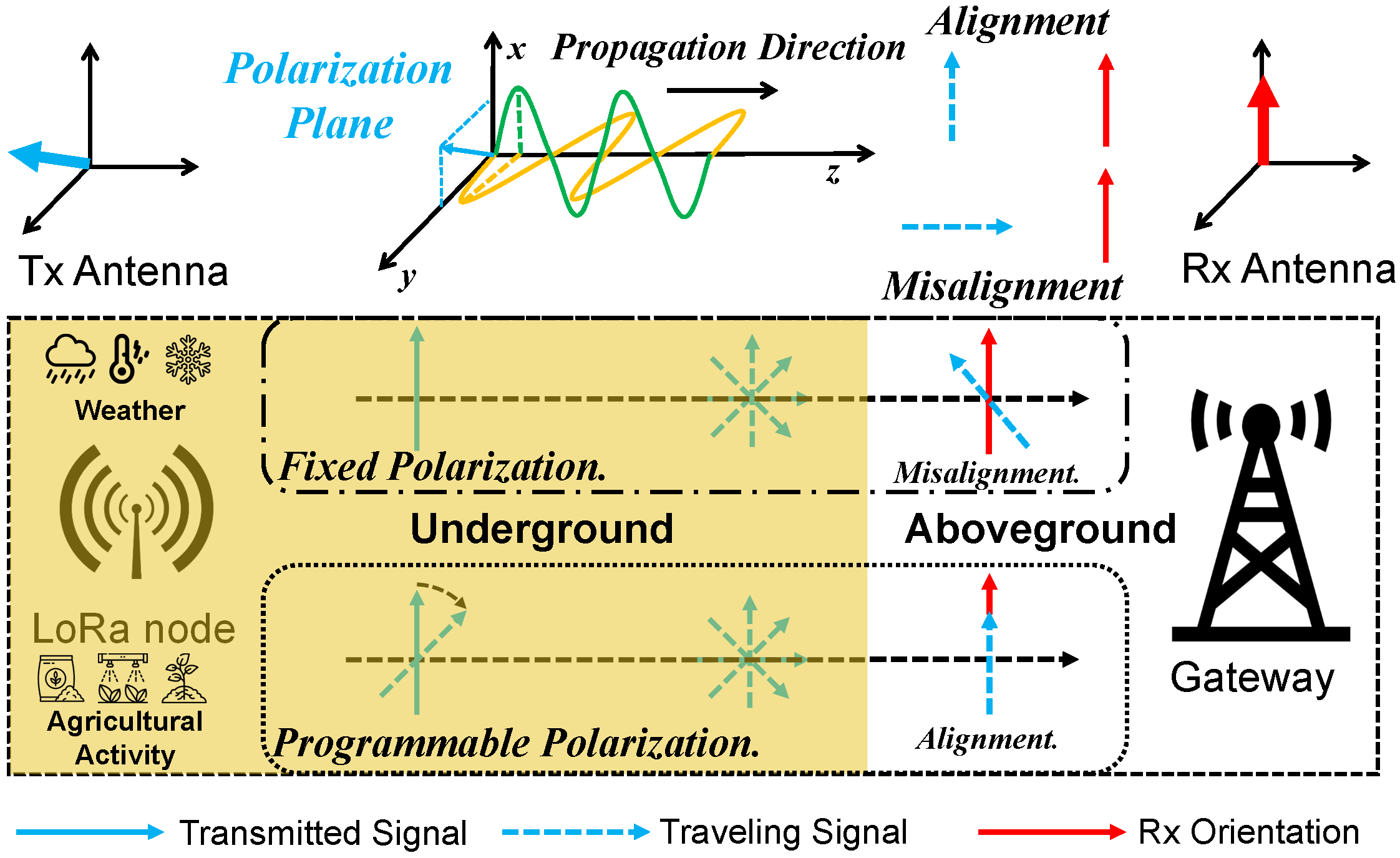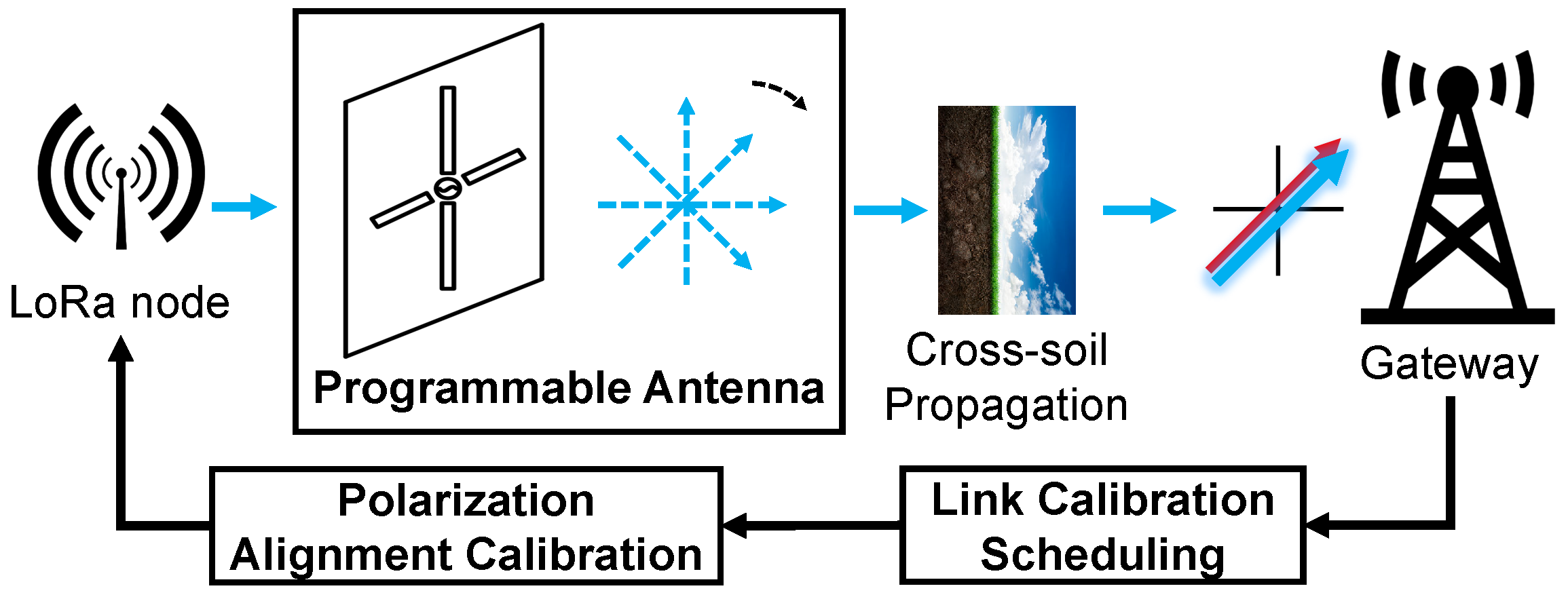Reliable and Sustainable Communication and Networking Systems for Next-generation Agricultural IoT
Project Information
Project Overview
Project Plan
Soil monitoring plays an essential role in agricultural systems. Rather than deploying sensors’ antennas above the ground, burying them in the soil is an attractive way to retain a non-intrusive aboveground space. Low Power Wide Area Network (LPWAN) has shown its long-distance and low-power features for aboveground Internet-of-Things (IoT) communication, presenting a potential of extending to underground cross-soil communication over a wide area, which however has not been investigated before. The variation of soil conditions brings significant signal polarization misalignment, degrading communication reliability. We focus on designing a reliable cross-soil communication system that is compatible with COTS LoRa radios. Inspired by the root-cause analysis in our upper-ground weak signal decoding system, we have conducted extensive empirical studies to find out the root cause of SNR degradation in cross-soil communication. The polarization misalignment significantly degrades communication reliability. We propose to keep polarization aligned under two tasks automatically. First, we propose to design a hardware component to make the polarization configurable. Second, we propose to design a scheduler to trigger a calibration process for optimizing communication reliability and extra energy overhead simultaneously.
 Cross-soil communication
Cross-soil communication  Polarization alignment rationale
Polarization alignment rationale  System architecture
System architecture
In recent years, the trend of Direct-to-Satellite communication has gained significant traction in agricultural IoT, presenting unique challenges. In such systems, each satellite handles communications with thousands of IoT gateways on the ground, necessitating a robust system capable of managing concurrent transmissions without substantial interference. Long Range-Frequency Hopping Spread Spectrum (LR-FHSS) has emerged as a solution, offering extensive subchannel support for concurrent transmissions in long-range IoT networks. However, its random channel selection can sometimes lead to poor channel quality. To tackle this issue, we focus on two key points: First, we plan to develop customized hardware capable of full-duplex communication and Doppler shift compensation to maintain stable connections in high-speed satellite links, aiming to acquire precise channel estimation. Second, we propose a novel indicator for channel quality. This guides the decision-making process for real-time channel selection, improving upon the random selection inherent in LR-FHSS.

